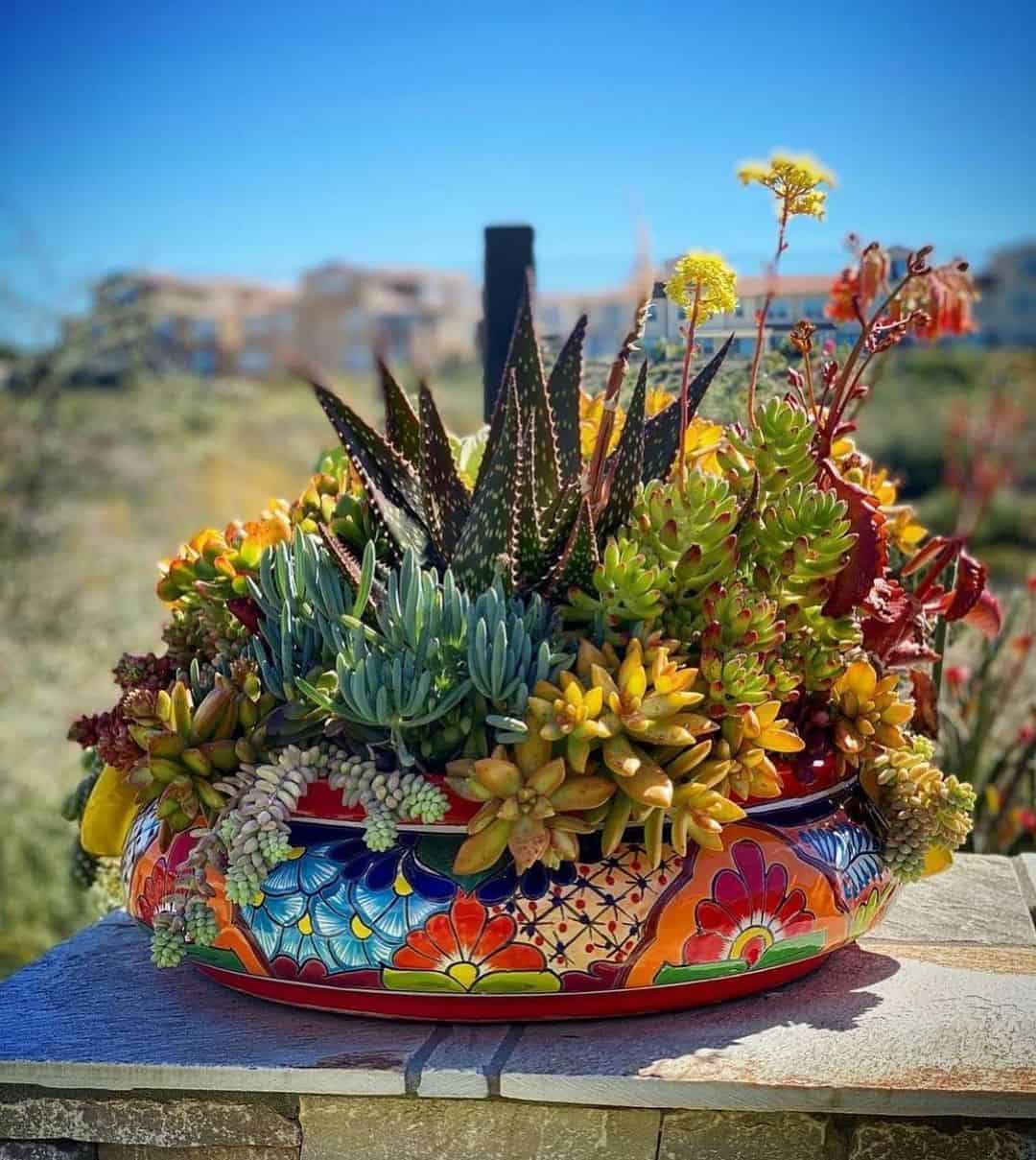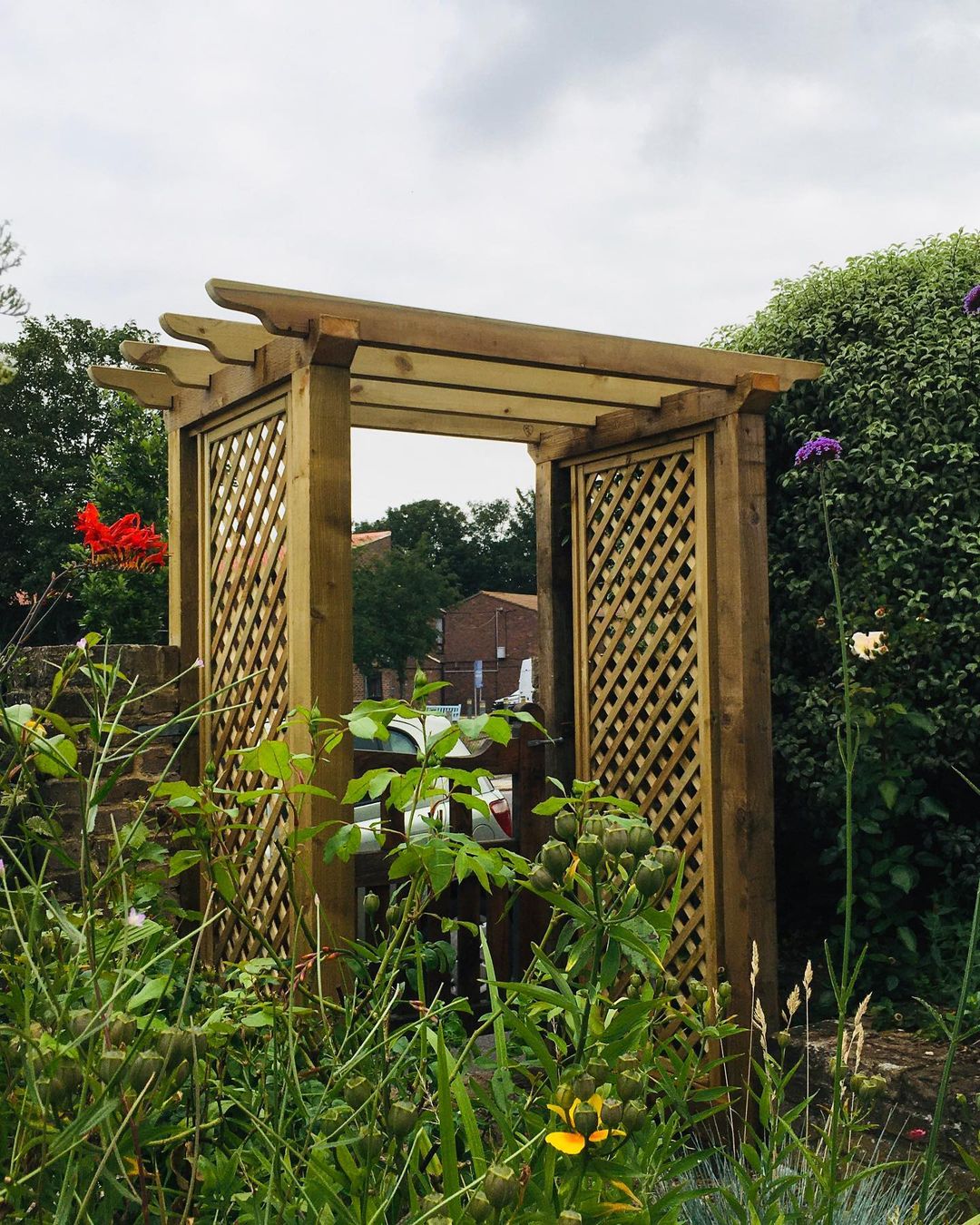Building a planter box around a tree is a great way to maximise the use of your garden space. It can also create a nice visual effect, particularly if the tree itself isn’t much to look at. After all, there’s little you can put close to it, so that part of your garden might look a little barren.
Building a planter box around a tree is easy and quite cheap. You can use scrap wood from other DIY projects, as well as stones or rocks. Here’s how to do it in six simple steps:

Credit: Shutterstock
Step 1 – Choose the right size and shape
Have a good look around your garden. You don’t want the planter box to be too big or too small. Balance is key.
If you want to protect the roots of the tree, leave at least 6 feet between the tree trunk and whatever plants you’re going to grow. Pay attention to ground-covering plants as they might invade the area sooner or later.
Since a tree trunk is round, you might be tempted to go for a circular planter, but this similarity in shape can be jarring to the eye. Plus, building a round planter box is more complicated.
As a rule, a planter box built around a tree should be square. It’s best to avoid a rectangular box too as it might make the area seem unbalanced.

Turn a bland area under a tree into an attractive focal point. Image credit: Pinterest
Step 2 – Clean and level the area
Clean the area of roots and weeds and make sure to fill any holes. If the area surrounding the tree is not perfectly flat, try to correct that by adding an extra layer of soil on the sloping side.
If the ground is too hard, gently break up the soil using a shovel and a rake. For particularly hard ground, use a tiller. Borrow one from a neighbour if you don’t have one.
Important: Work carefully so you don’t damage the roots of the tree.
Step 3 – Gather the materials
The beauty of this type of project is that it doesn’t require many materials. You may need to pop to a DIY store and buy a few pieces of wood and you can also use leftover pieces from previous projects.
All you need are four pieces of wood that you can cut to the same length.
Tip: If you’re going with wood, choose cedar wood which is very resistant and ideal for outdoor projects. Cedar wood is naturally resistant to bacteria and fungi and it contains natural oils that protect it from rotting.

You could even build a seat around the edge of your planter box. Image credit: Pinterest
Step 4 – Build the planter box
Place the four wood pieces in a square and see how the size looks. If you’re satisfied with the size, get your electric screwdriver and eight screws. Make sure the screws are long enough so the pieces of wood are attached firmly.
You should pre-drill the holes to avoid wood splitting. Also, grab a carpenter’s square and check that wood pieces are placed at a 90-degree angle.
Tip: Use 2 screws per corner to make sure the wood stays in place.
Step 5 – Fill the planter box with soil
At this point, you need to consider the requirements of the plants you’re planning to grow. Use adequate soil to fill the planter box and let it sink in for a couple of days.
You might also want to cover the topsoil with a protective layer, such as wood chips or rubber mulch. Avoid adding too much soil in the area as the extra weight might damage the tree roots.
Step 6 – Choose the plants
You could choose fast-growing, ground cover plants for the planter box if the area around the tree is particularly barren. You could also plant something colourful for greater effect.
Check the sun exposure requirements of any plants you want to grow in the planter box. Keep in mind that the plant will have little to no direct sunlight and not much rain if the tree has a big canopy.
Tip: Choosing a perennial for the planter box is a good idea as you won’t have to plant again the following year. This saves you a lot of work and prevents accidental damage to the roots of the tree.
Planter box around tree ideas
Any landscaping project involves creativity so feel free to use the guide above and twist it however you want. Here are some ideas to get you started:
Planter box fence
If you have the skills, you can build a more elaborate fence for your planter box, using wood beams and decorative elements. Take care not to make the planter box walls too high because the plants inside will go unnoticed and that would be a pity.
Small planter boxes
If you have several trees close by, you could build small planter boxes and grow colourful plants in them. Using the same type of plant in all boxes will create a unifying element.
Brick or rock planter box
Also, you can experiment and use other types of materials for the planter box walls. You can use bricks or small rocks to trace the borders of a flower bed under a tree. Rocks are a great choice if you want to make a planter box with rounded corners or an elliptical shape.

Don’t be afraid to experiment with bricks and stone. Image credit: Pinterest
Terraced planter box
Another idea you could consider is building a terraced planter box. For this to work, you’ll need a large area. A terraced planter box works best on a sloping surface.
The planter boxes should be of the same shape and perfectly symmetrical. As for the plants you cultivate in each box, make sure their colours create a nice contrast.
Tip: The plants growing in the larger outer box should not be too big or they may overshadow the plants in the box closer to the tree.
In the end, take this project one step at a time and don’t rush it. You’ll enjoy it more and inspiration will come more easily, too.

Save this pin for later







Unfortunately, this advice can be harmful to trees. I was disappointed that the only mention of any damage to a tree with building a garden box around it could be due to the “weight” of the soil, or plant overgrowth. These may be issues worth considering, but in my opinions they are by far less important than the act of covering up a tree’s root flare and filling soil and mulch around right up against a tree trunk. So, here’s some additional info that everyone should consider before taking on a tree-related project:
If you are planting a tree or woody shrub (or having one planted), and if you want it to be healthy and live a long time, MAKE SURE YOU PLANT AND MULCH PROPERLY!
Mulch volcanoes (just Google it) and planting woody-stemmed plants too deep can cause severe damage and eventually kill your tree/shrub. The root flare of a tree MUST be visible when planting. Take note that the tree may sink a bit after planting. It’s better to plant a little too high and add a little soil later if needed, rather than too deep.
Why?
Trunks and the root flares of trees need to breathe, and they need to be exposed to the air to be able to dry off. Burying the root flare with dirt and/or mulch means they can’t do that. These practices can cause rotting of the base of the trunk, and can also cause root girdling, where roots grow up and around the tree base instead of down and out.
The proper way to mulch a tree is to start about 3 inches from the root flare at the base of the trunk, and apply mulch in a 3 inch-deep layer about 3 feet out from where you started the mulch.
There are more details, but this is basic proper tree/woody stem plant planting and mulching practice.
Additionally if you have a street tree (or any tree), please resist any temptation to create a garden box around it and dump in a bunch of dirt then plant flowers or whatever. Planting flowers around and established tree base (that is NOT buried in soil and/or mulch) is ok, but if you do the garden-box-soil-fill thing, your tree will suffer the same as if you planted it too deep or mulched it incorrectly.
If your trees have already been planted too deep and/or over-mulched, please look into the long, careful process of using an air tool to excavate, and deliberate, potentially long-term pruning of some of the roots to help give your tree a second chance. This may require a professional.
Also look into the correct use of gator bags (those bags you may see around newly planted trees to provide water for the first while.) Empty gator bags just block rain water from reaching the tree’s roots, and leaving a gator bag on a tree for too long (with or without water in it) can cause major issues for the tree.
I hope the author/s of this post will consider this info and re-write their article, or at least include a message/warning at the beginning. Thank you.